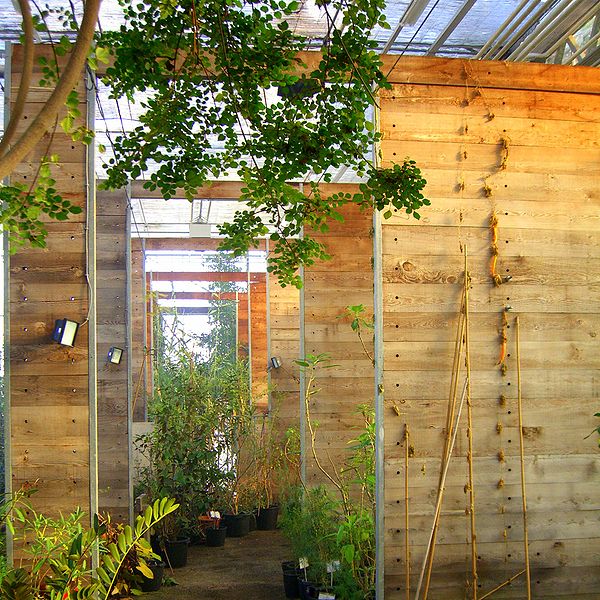The Softwood Lumber Board (SLB) and the Binational Softwood Lumber Council (BSLC) congratulated the U.S. Department of Agriculture on the formal launch of the U.S. Tall Wood Building Prize Competition.
The competition invites U.S. developers, institutions, organizations and design teams willing to undertake an alternative solution approach to designing and building taller wood structures to submit entries for a prize of $2 million.
Following a funding initiative announced by the Obama Administration and the U.S. forestry industry through the USDA, SLB and BSLC earlier this year, the goal of the prize competition is to link rural U.S. technical expertise and products with evolving domestic and international market opportunities to showcase the application and sustainability of innovative wood-based structural building materials and solutions.
The objective of the competition is to identify proponents with building project(s) in the concept-, schematic- or design-development stage in the U.S. that can safely and successfully demonstrate the use of wood as a viable structural material in tall buildings.
Above and beyond the safety, environmental and economic benefits of wood, the initiative will challenge developers, designers, building officials, builders and manufacturers to further develop and refine specification and use of structural wood products - ultimately expanding the opportunity for new product and market development.
Marc Brinkmeyer, SLB Board Chair explained, “There is a breadth of wood-related building science, design and construction that’s underway internationally. In recent years we’ve seen a number of buildings over seven stories constructed around the world, including the 10-story Forte building in Melbourne, Australia and the 14-story Treet building in Bergen, Norway."
The opportunity to learn from what’s been done elsewhere, and build on it here in the U.S., is very exciting for our industry, our employees and communities. I am equally thrilled and appreciative of the partnership that industry has forged with the USDA on this competition, and am looking forward to seeing the great wood-based projects that will result. Wood truly is an optimal choice for the environment and economy.”
The competition is the first step of a new USDA and forest industry initiative that is designed to support rural U.S. communities. Submissions that meet the criteria of the competition will be evaluated by an expert panel of design and building professionals. The full Official Rules document, related background information and contact details can be found on the prize competition website.
Related Stories
| Nov 15, 2010
Gilbane to acquire W.G. Mills, Inc.
Rhode Island-based Gilbane Building Company announced plans to acquire W.G. Mills, Inc., a construction management firm with operations based in Florida. The acquisition will dramatically strengthen Gilbane’s position in Florida’s growing market and complement its already established presence in the southeast.
| Nov 11, 2010
Saint-Gobain to make $80 million investment in SAGE Electrochromics
Saint-Gobain, one of the world’s largest glass and construction material manufacturers, is making a strategic equity investment in SAGE Electrochromics to make electronically tintable “dynamic glass” an affordable, mass-market product, ushering in a new era of energy-saving buildings.
| Nov 11, 2010
Saint-Gobain to make $80 million investment in SAGE Electrochromics
Saint-Gobain, one of the world’s largest glass and construction material manufacturers, is making a strategic equity investment in SAGE Electrochromics to make electronically tintable “dynamic glass” an affordable, mass-market product, ushering in a new era of energy-saving buildings.
| Nov 11, 2010
USGBC certifies more than 1 billion square feet of commercial space
This month, the total footprint of commercial projects certified under the U.S. Green Building Council’s LEED Green Building Rating System surpassed one billion square feet. Another six billion square feet of projects are registered and currently working toward LEED certification around the world. Since 2000, more than 36,000 commercial projects and 38,000 single-family homes have participated in LEED.
| Nov 10, 2010
$700 million plan to restore the National Mall
The National Mall—known as America’s front yard—is being targeted for a massive rehab and restoration that could cost as much as $700 million (it’s estimated that the Mall has $400 million in deferred maintenance alone). A few of the proposed projects: refurbishing the Grant Memorial, replacing the Capitol Reflecting Pool with a smaller pool or fountain, reconstructing the Constitution Gardens lake and constructing a multipurpose visitor center, and replacing the Sylvan Theater near the Washington Monument with a new multipurpose facility.
| Nov 9, 2010
Just how green is that college campus?
The College Sustainability Report Card 2011 evaluated colleges and universities in the U.S. and Canada with the 300 largest endowments—plus 22 others that asked to be included in the GreenReportCard.org study—on nine categories, including climate change, energy use, green building, and investment priorities. More than half (56%) earned a B or better, but 6% got a D. Can you guess which is the greenest of these: UC San Diego, Dickinson College, University of Calgary, and Dartmouth? Hint: The Red Devil has turned green.
| Nov 9, 2010
12 incredible objects being made with 3D printers today
BD+C has reported on how 3D printers are attracting the attention of AEC firms. Now you can see how other creative types are utilizing this fascinating printing technology. Among the printed items: King Tut’s remains, designer shoes, and the world’s smallest Rubik’s Cube.
| Nov 9, 2010
U.S. Army steps up requirements for greening building
Cool roofs, solar water heating, and advanced metering are among energy-efficiency elements that will have to be used in new permanent Army buildings in the U.S. and abroad starting in FY 2013. Designs for new construction and major renovations will incorporate sustainable design and development principles contained in ASHRAE 189.1.









